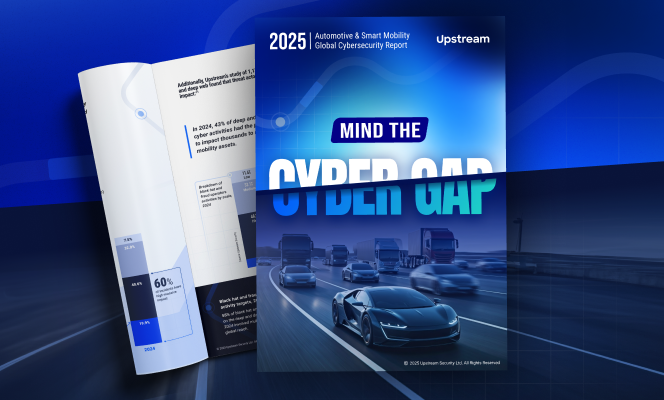

Imagine buying a brand-new connected vehicle, only to wake up one morning locked out of it. The app on your phone no longer works. The doors won’t open, the engine won’t start, and a stranger, somewhere, is now in control of your car. In Russia, this is exactly what happened to owners of a Chinese OEM-manufactured vehicle, who discovered that they had lost access to their “master accounts”.
At first, it looked like a cyberattack: drivers stranded, cars manipulated remotely, and even ransom demands in some cases. But the truth was more complicated. This wasn’t malware, and it wasn’t a coordinated cyberattack. It was the unintended consequence of grey-market imports and weak account registration processes.
How a registration gap became a cybersecurity backdoor
The Chinese OEM wasn’t officially selling outside China in 2024–2025. The company had announced overseas expansion but delayed the rollout, leaving buyers abroad with no official dealers, service, or app support.
That gap was quickly filled by grey-market imports. But because the official companion app could only be registered with a Chinese phone number, owners outside China had to rely on workarounds:
- Local SIM cards are purchased in China, either directly by the buyer or through a third party.
- Virtual Chinese numbers, which could lapse if subscriptions weren’t renewed.
Some dealers sold cars already tied to one of these numbers, but all registrations ultimately traced back to these two methods.
Control hinged on the master account: the primary digital key that manages everything from locks, windows, heating, ventilation, and air conditioning, to engine start/stop, geolocation, OTA updates, and user permissions. Whoever held the number controlled the account. And whoever controlled the account controlled the vehicle.
Opportunists quickly took advantage. If a number expired, was cloned, or remained in someone else’s hands, the rightful owner could be locked out. In many cases, they were pressured to pay to regain access.
It wasn’t a cyberattack in the traditional sense, but the effect was the same: stranded drivers, ransom demands, and a structural backdoor in the ownership model that left connected cars wide open to abuse.
Real cyber risks exposed
Incidents like the Jeep Cherokee in 2015, Sam Curry’s license plate hack in 2024, or Sam Curry’s vehicle authorization hack in early 2025 all demonstrated what was technically possible. But this case is different: it wasn’t malware, and it wasn’t research. It was the unintended consequence of account lifecycle gaps, and the outcome was just as disruptive as a coordinated attack.
That’s what makes it so alarming: you don’t need malware to immobilize cars. Weak registration flows and fragile account ownership created the same effect.
For cybersecurity teams, this is a crucial lesson. Even if no malicious code runs inside the vehicle, the digital ecosystem around the car (APIs, mobile apps, and identity management) is equally part of the attack surface. Monitoring for suspicious account changes, enforcing strong registration policies, and flagging abnormal API calls are all measures that could have prevented or limited the fallout here.
How one loophole mirrors a growing industry-wide trend
This case exposed the same weak spots attackers are exploiting at scale across the industry. Data from Upstream’s 2025 Global Automotive Cybersecurity Report shows just how fast these risks are growing:
- Account and control takeovers are surging
Malicious black-hat incidents where attackers gained remote control of vehicles rose 19% from 2023 to 2024 and continue to climb in 2025. The master account loophole is a textbook example of how account control equals vehicle control. - APIs are the new attack surface
API-related incidents jumped significantly between 2023 and 2024, and 2025 has already reached last year’s numbers with four months still to go. Just as in this case, these attacks bypass in-vehicle defenses and strike the digital ecosystem around the car. - Apps and identity remain weak links
Vehicle apps and authentication flows are increasingly being exploited not just for data theft but for direct manipulation, like unlocking doors, starting engines, and disabling access. This is exactly the risk exposed by grey-market master accounts.
Next steps: Building cyber resilience for the road ahead
Simple gaps in identity and registration can evolve into full-scale attacks, as this incident clearly shows. To prevent the next crisis, the industry needs to:
- Treat accounts like safety systems
Multi-factor Authentication (MFA), secure re-registration, and credential monitoring should be standards. - Reconsider the import and resale blind spot
Grey-market cars need auditable re-registration and dealer accountability to close the loopholes. - Think ecosystem, not silos
From OEM backends to dealer apps, every player is part of the attack surface. - Detect patterns, not just anomalies
Fleet-wide visibility is essential. What looks like a harmless lockout on one car may be the early signal of a coordinated exploit. vSOCs that correlate activity across models, regions, and user accounts can expose attack campaigns before they escalate. - Secure APIs as part of the vSOC
APIs are a top attack vector and are often bypassed in-vehicle defenses. Integrating API monitoring into the vSOC allows teams to spot abnormal requests, account takeovers, or misuse of backend services before they impact drivers. - Share intelligence
No OEM or fleet can fight this alone; industry-wide collaboration, like Auto-ISAC, is the only way to blunt backdoor exploitation.
The takeaway is simple: in connected mobility, digital identity and APIs are safety-critical. When account and API vulnerabilities are left unchecked, they don’t just lock out individual drivers; they can scale into widespread ransom campaigns that cripple fleets, dealers, and even critical infrastructure. Across the board, securing accounts, monitoring APIs, and ensuring supply chain integrity must now be treated with the same seriousness as braking systems or airbags.

